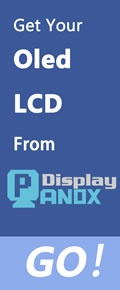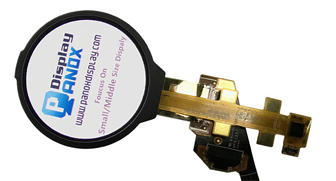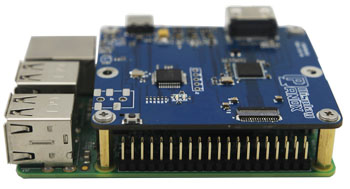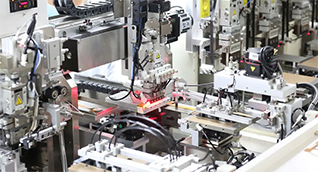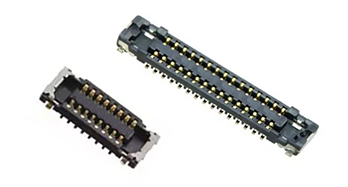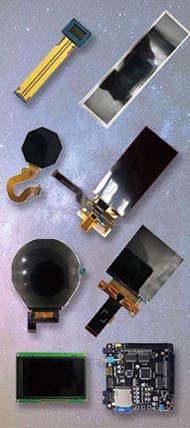EDID for HDMI stands for Extended Display Identification Data, a vital data structure enabling devices to communicate display capabilities and ensure optimal video and audio compatibility. Also check: HDMI
What Is EDID for HDMI and How Does It Work?
EDID for HDMI is a metadata format transmitted from a display device (like a monitor or TV) to a source device (such as a PC or media player). It describes the display’s supported resolutions, refresh rates, color depths, audio formats, and more. This exchange allows the source to output the highest compatible quality automatically, preventing display errors or incompatibility issues.
This communication happens over the HDMI cable via the Display Data Channel (DDC), ensuring seamless device interoperability.
How Does EDID Influence HDMI Device Compatibility?
EDID directly determines whether an HDMI source device can correctly identify and use the display’s supported features. Without accurate EDID data, issues such as flickering, blank screens, or unsupported resolutions may occur. Proper EDID ensures full compatibility across various brands and devices, making it especially important for factories, OEMs, and suppliers providing HDMI-compatible industrial or commercial displays.
Which Industries Rely on EDID for HDMI in Their Manufacturing?
Many sectors depend on EDID for HDMI to guarantee quality and interoperability:
-
Electronics OEMs producing monitors, TVs, and projectors
-
Industrial factories manufacturing digital signage and control panels
-
Automotive suppliers integrating HDMI displays in dashboards or infotainment
-
Medical device manufacturers ensuring precise image representation on screens
-
B2B suppliers and wholesalers of consumer and professional display products in China
Panox Display, for example, leverages precise EDID configurations to deliver reliable OEM LCD and OLED displays to global markets.
Why Is Custom EDID Important for Chinese Manufacturers and OEMs?
Custom EDID allows manufacturers and OEMs in China to tailor display parameters to unique product needs, optimizing performance for specific applications. It helps Panox Display and other suppliers reduce compatibility errors across various source devices, accommodate non-standard resolutions, and ensure seamless integration into customers’ systems.
OEM customization supports brand differentiation and enhances product warranty reliability.
How Can Factories and Wholesale Suppliers Manage EDID Settings Effectively?
Factories and wholesalers managing large-scale OEM orders can use EDID management tools and programmable HDMI controllers to update or customize EDID data before shipping. This practice reduces returns caused by compatibility issues and improves customer satisfaction.
Automated production lines like those at Panox Display implement quality control processes for EDID validation to maintain consistency.
Table: EDID Management Approaches for HDMI Devices
| Method | Description | Benefit |
|---|---|---|
| Default EDID | Manufacturer pre-set standard EDID | Easy deployment, wide compatibility |
| Custom EDID Programming | Tailored EDID settings for specific devices | Optimized performance, less errors |
| EDID Emulation | Emulates display capabilities in source device | Useful in testing and development |
Who Should Use OEM EDID Solutions from Suppliers Like Panox Display?
OEMs requiring unique display specifications, such as specialized resolutions or custom audio formats, should prioritize suppliers offering EDID customization. Panox Display, as a leading OEM manufacturer and supplier based in Shenzhen, China, provides expert customization services and flexible MOQ options ideal for startups and mid-sized companies worldwide.
Such tailored service is key to meeting demanding B2B product specifications.
Can EDID Issues Be Troubleshooting by End-Users or Should They Be Factory Managed?
While some simple EDID-related issues can be temporarily resolved by end-users through cable swaps or firmware updates, complex compatibility problems typically require factory-level intervention. Factories and OEMs should provide pre-tested EDID configurations with their products to minimize on-site troubleshooting, enhancing professional brand credibility.
When Should a Manufacturer Consider Updating EDID Data?
Updating EDID data is essential when:
-
Introducing new display models with different feature sets
-
Correcting compatibility issues reported by clients
-
Adding support for newer video/audio formats or resolutions
-
Preparing products for specific OEM or distributor requirements
Timely EDID updates ensure relevance in fast-evolving multimedia markets.
What Are the Key Advantages of Partnering with Panox Display for EDID and HDMI Displays?
Panox Display offers:
-
Expertise in custom EDID and display integration for OEM/ODM clients
-
Access to premium brand LCD/OLED panels with precise factory tuning
-
High-volume manufacturing capabilities with stringent quality controls
-
Flexible MOQ to accommodate startup and small/medium business demands
-
Extensive B2B global shipping experience, especially serving North America and Europe
This makes Panox Display a trustworthy choice for Chinese display manufacturers and international suppliers handling HDMI-based products.
Panox Display Expert Views
"Effective EDID management is critical for ensuring smooth plug-and-play HDMI experiences in B2B manufacturing scenarios. At Panox Display, we understand that each OEM and supplier partner needs tailored EDID solutions to optimize product performance amid diverse end-user devices. Our sizeable production lines and comprehensive customization enable cost-efficient, reliable delivery of high-quality displays suited for industrial, automotive, medical, and consumer sectors worldwide."
— Panox Display Technical Team
Conclusion: Key Takeaways and Actionable Advice for EDID in HDMI
Understanding and managing EDID for HDMI is fundamental for Chinese manufacturers, factories, and B2B suppliers to ensure product compatibility and customer satisfaction. Custom EDID programming, quality control, and partnering with experienced OEM providers like Panox Display can greatly reduce returns and support effective integration.
Factories should adopt EDID validation in production, regularly update EDID data with market needs, and support clients through pre-configured, compatible display solutions.
FAQs
Q1: Can EDID be manually edited by end-users?
A1: Simple edits are possible with specialized tools, but factory-level programming ensures accurate and reliable results.
Q2: How does EDID affect 4K HDMI displays?
A2: EDID communicates support for 4K resolution and refresh rates, enabling devices to deliver correct video quality.
Q3: Is EDID customization costly for OEMs?
A3: Custom EDID adds some cost but improves compatibility and reduces costly returns, offering overall savings.
Q4: Why choose a Chinese supplier for HDMI EDID displays?
A4: China provides flexible OEM solutions with competitive pricing, high manufacturing capacity, and faster customization turnaround.
Q5: What standards does EDID follow?
A5: EDID follows VESA standards to ensure uniform display identification across devices.









